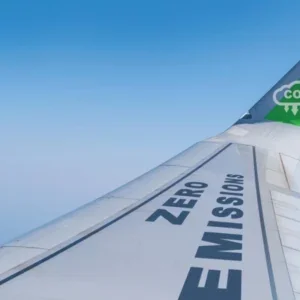Today’s travellers are given a wide range of options before and during their passenger journey at an airport. From booking to check-in, to bag drop to boarding and beyond, passengers are presented with a dizzying array of options; on a PC, on mobile, over the phone or in person, the choices are myriad.
By providing such choice though, airport operators, airlines and other industry stakeholders have painted themselves into something of a corner. Maintaining all these various operating processes, often using disparate systems, adds to the cost and complexity of their upkeep. For example, offering self-service bag drop and traditional check-in desks, could require more space and two systems to operate.
Enter IATA, whose Common Use Vision 2020 will allow airlines and airports to have a structured environment where check-in desks, check-in kiosksand self-service bag drops would all be using standard interfaces. The aim is to reduce the burden, from an investment and maintenance perspective, by allowing common-use systems to perform a greater breadth of tasks, without losing any of the options travellers have become accustomed to. Magali Collot, development manager in the IATA passenger team, discusses this vision.
Future Airport: How have we seen common-use systems evolve over the past decade?
Magali Collot: In the past, common-use systems were disparate, with no common technical standard. That resulted in application suppliers required to certify on a number of different suppliers’ platforms, incurring high costs. In 2003, the Seattle summit was the catalyst to start changing the ‘Common Use Technical Equipment (CUTE) Recommended Practice’. It involved a group of airlines, airports and technology suppliers. In 2008, a new technical standard called ‘Common Use Passenger Processing Systems’ (CUPPS) was created. In 2009, pilot tests were conducted involving six vendors creating a CUPPS platform and six airlines with a CUPPS application. CUPPS platforms are now commercially available, and 145 airports have them. This figure was provided by the major CUPPS vendors that are part of the CUWG in mid-2014.
Common-use self service (CUSS) is another common-use standard that describes the specifications and standards for multiple airlines sharing one physical self-service kiosk. CUSS kiosks are now widely deployed globally. The last common use standard was created in 2014 for a common use self-service bag drop process using web services technology.
Why is there a need for IATA to push this concept forward?
It is paramount that the common-use standards evolve based on business needs and technology. The ‘Common Use Strategy’ will help focus and drive the activities of the Common Use Working Group over the next five years. Additionally, this strategy document represents the views of not only airlines, but also airports and IATA strategic partners involved in the CUWG.
What are the main challenges faced by airports and airlines when considering investment in new common-use platforms, without necessarily replacing existing services?
There is pressure on airport automation with new ways of servicing the customer, whether that is on the web, at a kiosk, via mobile phone or fully automated check-in channels. At the same time, there is a need to maintain existing infrastructure to provide services in a traditional way for the customers who want it.
At the heart of the ‘Common Use Strategy’, a vision was developed to have more flexible infrastructure that can do both without doubling the costs and states "By 2020, common use will provide flexibility of choice to deploy services based on interfaces adhering to industry standards".
From an airline’s point of view, standard interfaces are definitely the way forward. The flexibility allows an airline to choose the standard interfaces such as web services, cloud computing, mobile devices and desktop offerings that would be presented to its application so that the concept of ‘certify on one platform, run on many’ remains a core principle.
From an airport’s perspective, they have billions of dollars invested in their terminal facilities, and those facilities need to be efficiently used in order to realise the full benefit of that investment. Standard interfaces speed overall deployment and facilitate the development of new processes against those known interfaces.
Can you explain the thinking behind the ‘certify on one platform, run on many’ principle?
The CUPPS technical standard allows airlines to have a single CUPPS application that will work as expected on multiple CUPPS-certified platforms implemented by any common-use supplier. Additionally, airlines with CUPPS-certified applications can be confident that those applications can be deployed to any CUPPS airport without vendor-specific modifications.
Does this need for interoperability between platforms impact on resilience or security?
No, on the contrary, resilience, connectivity and security will continue to be key requirements in the future. This is the reason why the strategy document contains the following mission, which is to "provide on-demand, operationally flexible and resilient passenger processing services using interfaces adhering to industry standards that leverage contemporary technology to enable the integration of services from multiple providers".
What role does IATA play in the delivery of its Common Use Vision?
IATA supports the ‘Common Use Strategy’ that represents the views of airlines, airports and IATA strategic partners involved in the CUWG. Additionally, IATA will raise awareness and drive momentum to help the CUWG push its activities forward, especially when new technical industry solutions are built.
Are there any further developments on the horizon that you can see transforming the common-use space?
Currently, the most common deployment method is that the common-use platform is located at an airport location where the devices are. While a platform will continue to be a relevant deployment method, the concept of a virtual, cloud-based platform has recently begun to evolve so that ‘platform’ has become ‘conceptual’, meaning it is geographically independent (on site/off site).






